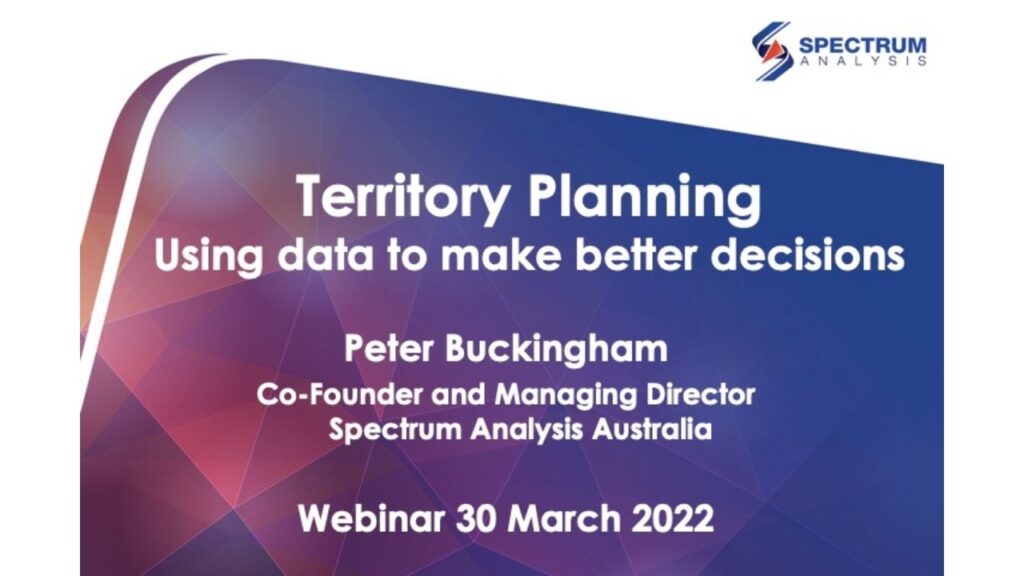Date: 30 March 2022
Format: Online Webinar via Zoom
Title: Territory Planning and Mapping with Peter Buckingham from Spectrum Analysis
Presenter: Peter Buckingham, Co-Founder and Managing Director of Spectrum Analysis
Chat Manager: Dorianne Lyons, Business Development Manager of Spectrum Analysis
LinkedIn Registered Guests: https://www.linkedin.com/events/territoryplanningandmarketingar6904389143250509825
Video Recording on YouTube: https://www.youtube.com/watch?v=-QbVf2UvkrI (and below)
PowerPoint Slides: https://spectrumanalysis.com.au/wp-content/uploads/20220330-territory-planning-with-peter-buckingham-spectrum-analysis-australia.pdf (and below)
Say Thank You with an Informative Review: Google or Website
If you have any further questions, please contact us.

